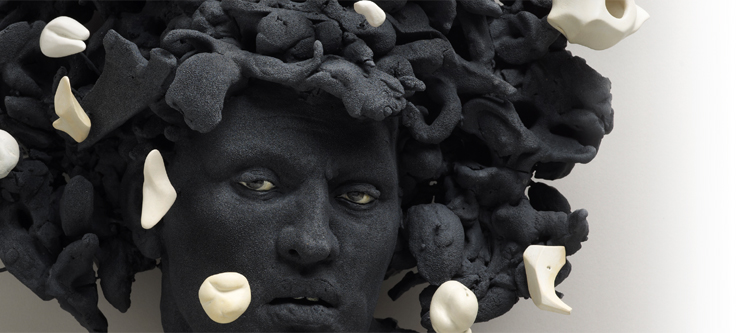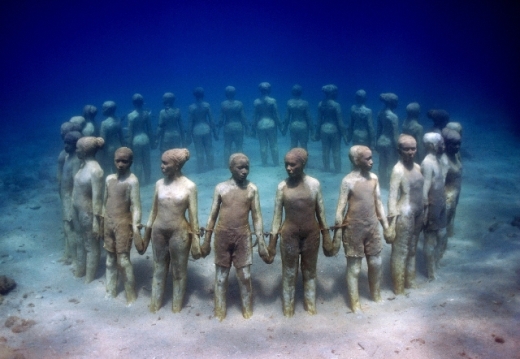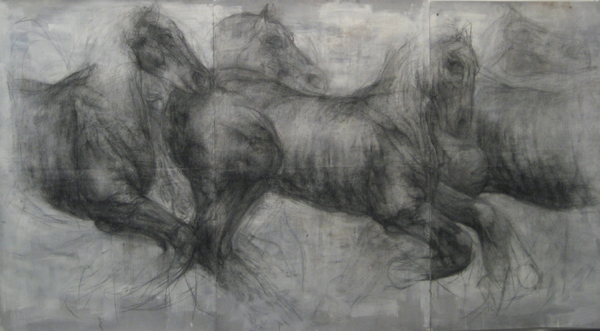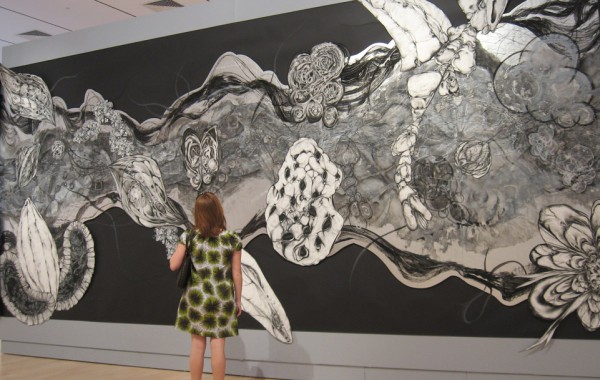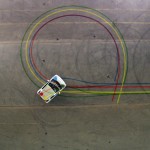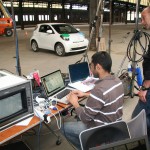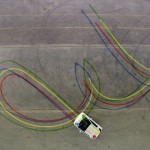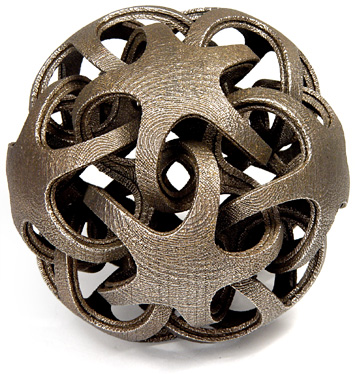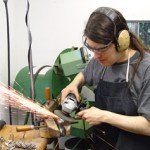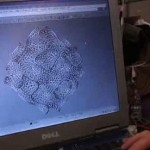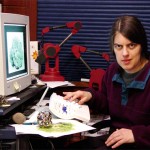When I first discovered Ian Brownlee, I found his images to be penetrating – much like a song you wake up singing the next day. The images from Brownlee’s “American Myths” series seem to remain fixed in my mind. These sometimes Darger-esque images have a sweet and gentle surface that appears to hide a deeper, stranger, perhaps darker evocation.
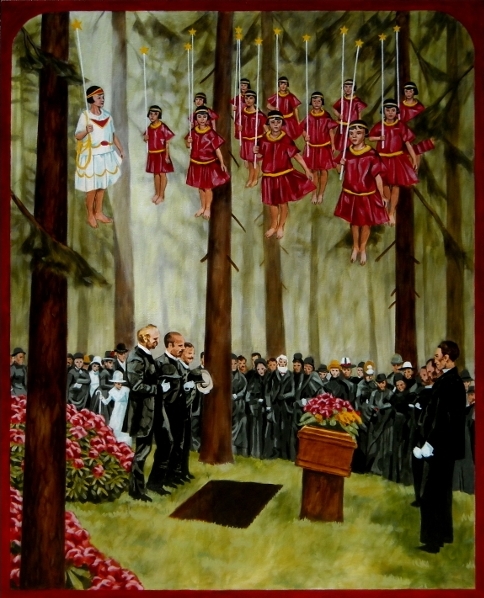
“Elisha Mitchell’s Funeral” Ian Brownlee, acrylic on canvas, 60×48, 2009
Brownlee uses the term “myth” in it’s widest sense. I had an opportunity to ask Brownlee about his work. He explained “I’ve spent a lot of time in in southeast and the west, studying the land and its history. Mythology refers not just to stories but to whole mindsets and outlooks full of unquestioned assumptions. Some of the works reference well-known myths, others point out and make fun of those unquestioned assumptions. Others are just strange and funny, but you find that in mythology too.”
“The works on paper from the American Myths series were definitely inspired by Henry Darger. I began the series as large paintings on canvas, painted somewhat realistically. But then looking back at my sketches, they seemed to have a freshness that was missing in the larger pieces. So I decided to do something Darger-esque with them. Those pieces are smaller, they’re on paper, and they rely on outline. I’m now in the process of painting larger versions of some of them.”
“Elisha Mitchell‘s Funeral” (pictured above) relates to an interesting historical figure. Professor Elisha Mitchell, of the University of North Carolina at Chapel Hill, was one of the first white men to discover the great and mysterious “Black Mountains” of North Carolina rich with dark balsam forests, reminiscent of the last ice age. Though native feet had tread these mountains for 15,000 years, the region was still considered “undiscovered” by the “new world”.
The brave yet tragic tale involves a great dispute between two men over which peaks were highest and who discovered them first. Mitchell made daring journeys often climbing on his hands and knees through miles of tunnel like, 3 foot high black bear trails through dense thickets up steep and slippery slopes in order to reach and measure the peaks. Ultimately, Elisha Mitchell lost his life in the effort to prove his claims. On June 27, 1857 at approximately 8:19 PM Elisha Mitchell slipped on a rocky ledge above a 20 ft waterfall (now called Mitchell Falls) and fell to his death. He hit his head as he fell and drowned in the deep cold pool below. But, Mitchell had successfully measured the highest peak east of the Rockies, and the mountain now bares his name.
Brownlee’s clean and simple imagery evokes for us the not so clean, and not so simple landscape of “American Myths”.
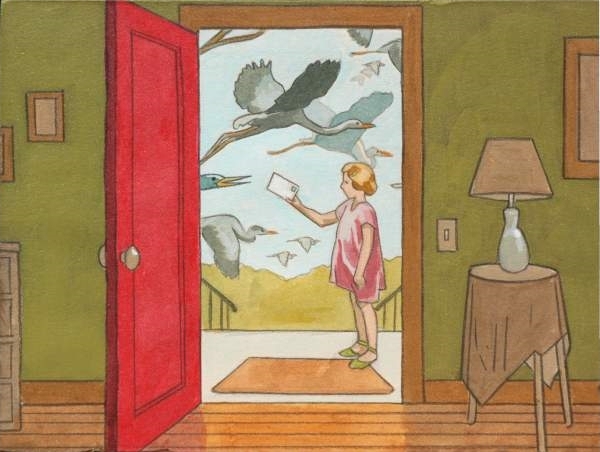 “Special Delivery” Ian Brownlee, acrylic on paper, 8×10, 2007
“Special Delivery” Ian Brownlee, acrylic on paper, 8×10, 2007
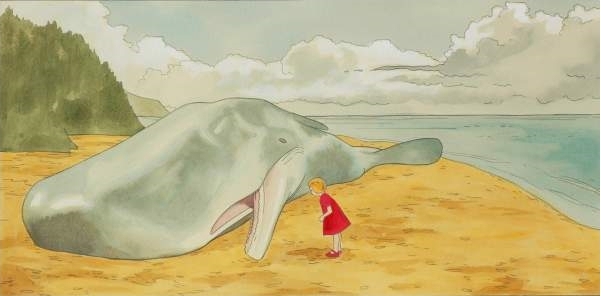 “Dying Words” Ian Brownlee, acrylic on paper, 22×30, 2007
“Dying Words” Ian Brownlee, acrylic on paper, 22×30, 2007
Slideshow of images from the “American Myth” Series by Ian Brownlee
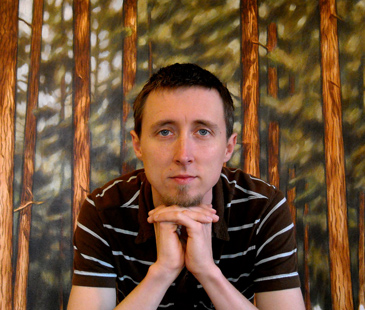
Artist Ian Brownlee, Asheville, NC
More:
IanBrownlee.us
WNC Magazine article on Ian Brownlee
Gallery Minerva – Ian Brownlee
